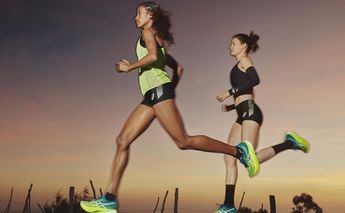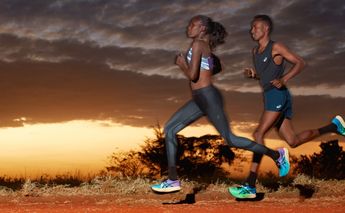If we could pick one exercise to recommend to all runners—young or old, beginner to experienced—it would be squats. Squats can help improve knee stability, leg power, and body awareness, as well as prevent common running injuries.
Knee Stability
One of the biggest squat myths is that squats are bad for your knees. False! This myth comes from a few badly run studies in the 1960s that have since been disproved. More recent studies have instead shown that people who regularly squat deep (below parallel) have more stable knees than distance runners & basketball players.¹
Why does knee stability matter to you? Knee stability depends mainly on 4 major ligaments: The anterior cruciate ligament (ACL), the posterior cruciate ligament (PCL), the medial collateral ligament (MCL), and the lateral collateral ligament (LCL).
Many runners struggle with knee ligament injuries. However, the muscles acting over the joint provide secondary dynamic stability! Meaning building up the muscles around your knees by squatting directly contributes to the prevention of knee damage due to torn, twisted, or otherwise weak ligaments.
Increased Leg Power
Leg power provides some obvious and some not-so-obvious benefits to runners. Running regularly will increase muscular endurance, but is an inefficient way to build muscular strength. Squats, on the other hand, are a very efficient way to build muscular strength. Increasing muscular strength is what will allow you to run faster on flats, power up hills, and lengthen your stride. Additionally, well-developed muscles enable the body to use oxygen more efficiently, thereby reducing fatigue.
Strength training your legs with squats directly improves running performance on uneven terrains, and soft surfaces such as dirt, sand, & snow. I know of a few brutal 5k courses that send runners through thigh-deep water, and strength training the legs would definitely help someone get through that. Additionally, strength training legs is crucial for sprinting. If you want to get an explosive start—or even more importantly, an explosive finish-line sprint—then squatting is for you.

Improved Body Awareness
Body awareness is formally known as proprioception; the sense of the relative position of parts of the body, and strength of effort being employed in movement.² This means being aware of body position, movement, posture, alignment, and acceleration—without using visual cues.
What does proprioception have to do with squats and running? Running injuries are often caused by movement faults such as losing posture, improper knee loading, and misalignment in the knees, hips, and ankles.³ Practicing squats with the correct technique can address all of these movement faults, and ultimately train your body to easily recognize if your posture has collapsed, if your hips aren’t “squared,” if your knees are rotated too far in one direction, or other common running mistakes.
Or in other words, we all have a natural Spidey-Sense when it comes to our bodies and movement, but practicing squats can help us more intuitively feel, recognize, and correct movement faults when running, walking, sitting, and standing.
Now that you know all of that, it is time to learn how to DO THE PERFECT SQUAT.
*Original article appeared on Runkeeper. Sources:
- 3 Squatting Myths that Refuse to Die, Feb 9th 2012, Biomechanics Fitness & Performance.
- Proprioception, Wikipedia.
- Better Squatting for Better Running, by Nate Helming, Jan 22nd 2013. Competitor.



